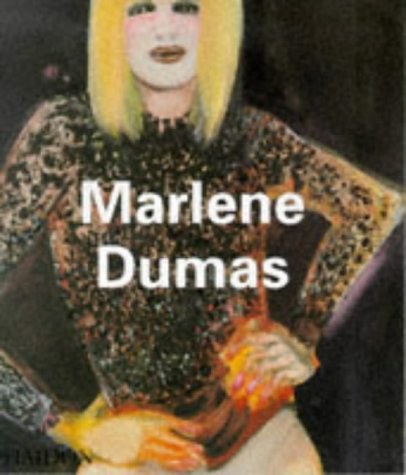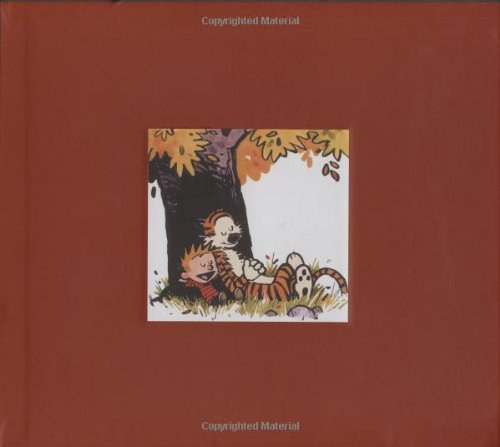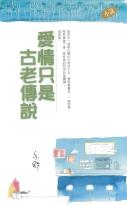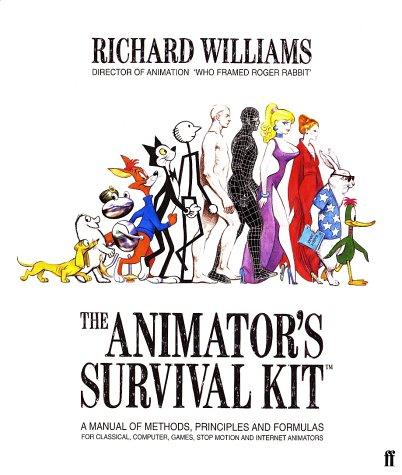
William Eggleston-s Guide
作者:John Szarkowski
出版社:The Museum of Modern Art, New York
出版年:2002-10-15
评分:8.9
ISBN:9780870703782
所属分类:行业好书
书刊介绍
内容简介
"William Eggleston's Guide" was the first one-man show of color photographs ever presented at The Museum of Modern Art, New York, and the Museum's first publication of color photography. The reception was divided and passionate. The book and show unabashedly forced the art world to deal with color photography, a medium scarcely taken seriously at the time, and with the vernacular content of a body of photographs that could have been but definitely weren't some average American's Instamatic pictures from the family album. These photographs heralded a new mastery of the use of color as an integral element of photographic composition. Bound in a textured cover inset with a photograph of a tricycle and stamped with yearbook-style gold lettering, the "Guide" contained 48 images edited down from 375 shot between 1969 and 1971 and displayed a deceptively casual, actually super-refined look at the surrounding world. Here are people, landscapes, and odd little moments in and around Eggleston's hometown of Memphis--an anonymous woman in a loudly patterned dress and cat's eye glasses sitting, left leg slightly raised, on an equally loud outdoor sofa; a coal-fired barbecue shooting up flames, framed by a shiny silver tricycle, the curves of a gleaming black car fender, and someone's torso; a tiny, gray-haired lady in a faded, flowered housecoat, standing expectant, and dwarfed in the huge dark doorway of a mint-green room whose only visible furniture is a shaded lamp on an end table. For this edition of "William Eggleston's Guide," The Museum of Modern Art has made new color separations from the original 35 mm slides, producing a facsimile edition in which the color will be freshly responsive tothe photographer's intentions.
精彩摘录
摄影实践是如此创作的:摄影师无法自由地重新安排他所拍摄主题中的各个要素,以适合他对该主题先入为主的想法来构建一张照片,而画家在作画时却是可以的。相反,摄影师是在其媒介所提供的各种可能性之中寻找他的拍摄主题。如果一片广袤无垠的风景无法尽收于取景框之中,摄影师便会设法选取一种不同却有辅助之效的主题,比如可能拍下两棵树和一块石头。
——引自第7页
人们可以说在这些照片中形式和内容无法剥离——也就是说,这些照片精确地表达它们所欲呈现之义。试图将这些似是而非的图像翻译成文字很明显是愚蠢之人的行径,不会有两个愚蠢之人选择相同的无法让人满意的说辞。比如,试着解释本画册第75页上的那张照片。不妨把它当作一张描绘分界线的照片:城市与乡村、文明与荒野之间的分界线,社区与自由之间的零界点,克制的反抗或是谨慎的冒险之间的边界,以及新旧事物之间的分界线,不断扩展到古老土地的新街坊,但该街坊本身又不如去年那么新颖,前景的房屋不再是这条线上最后一栋,还有停在该房屋门口处的1956年款别克轿车已到中年,依旧光亮,保养很好,且运作正常,拿得出手,但已不再年轻。还有切分白天和夜晚的晨昏线,此时,冷蓝色调的薄暮正慢慢变成厚重的晕影和暖黄色;此时,白天互不干涉的公众生活也与夜间私人的社区生活开始分野;此时,家人们开始重又聚集在祖传的屋檐之下,街上传来正在呼喊着自家孩子名字的女人声音。这样的解读可能会损害照片,只能对非常轻信的年轻人形成影响,同时,也可能会使其他人在没有文字的辅助下,更为持久地观看照片。但是,文字的含义与照片的意义充其量并行不悖,如同两条不会相交的思考线索;如果我们关注的是照片中的意义,言语的描述终将徒劳无益。
——引自第12页
相关推荐
-

阮刻《毛诗注疏》研究
李慧玲(1970—),女,河南浚县人,文学博士,现为华东师范大学古籍研究所副研究员。主要研究领域为经学及古典文献学。已出版的主要著作有、《礼记注译》、《毛诗注疏...
-

别生气,我又不是在说你
两位怪大叔给小青年的一剂心灵硫酸理解这个世界最好的方式,就是保持自己的偏见和好奇心————————————————————————————————旅游卫视总裁、...
-

幸福爱:从新手到高手的爱情修习课
杨冰阳(Ayawawa)门萨中国前主席、百万畅销书作家、进化心理学派情感专家、微信自媒体人十强唯一情感类得主。女性贴心择偶顾问,爱情风险控制专家。著有《聪明爱:...
-

盛世风华
作品目录上册第一章 神秘男子第二章 阴差阳错第三章 心有灵犀第四章 面带桃花第五章 劫后余生第六章 栽赃陷害第七章 立下字据第
-

人类的天性
阿尔费莱德·希区柯克(1899-1980)是举世公认的“悬念大师”。他生于伦敦,1925年开始独立指导电影。1939年应邀去好莱坞,次年拍摄了《蝴蝶梦》,获该年...
-

豆树青青
★美国图书馆协会年度最佳青少年小说,美国校园图书馆协会年度图书★《毒木圣经》作者芭芭拉·金索沃成名作★全球销量超过200万册,入选美国高中与大学课堂读本★致所有...
-

ウィッチハント・カーテンコール 超歴史的殺人事件
作者 紙城境介問到金閣寺在哪裡也答不出的京都居民。「第一屆得獎人有點帥呢?」因為這個理由把本作拿去投稿第一屆集英社輕小說新人獎,並獲得《優秀賞》。深受影響的兩大...
-

麒麟之翼
每个警察都应该好好读一读《麒麟之翼》,只要还有一丝疑点就绝不放弃,让冤案不再发生!东野圭吾加贺探案集最高杰作《达文西》杂志年度推理小说第1名 《春城晚报》年度读...
-

滑动解锁
尼尔·梅塔是谷歌公司的产品经理。他曾在微软公司、可汗学院和美国人口普查局工作,并在那里完成了联邦政府第一个全额资助的科技实习项目。他以优异成绩从哈佛大学毕业。阿...
-

中国远古时代
苏秉琦,中国现代考古学家,河北高阳人。1934年毕业于北平师范大学历史系。曾任北平研究院史学研究所副研究员。建国后,历任中国科学院考古研究所研究员,北京大学教授...
-

清单革命
现代世界的复杂性已经超出了人力所能控制的范围,任何一个需要从业人员掌控大量知识的领域都难逃厄运。从医疗到金融,从商业到行政,生活中的错误屡屡发生,令人触目惊...
-

灌篮高手12
初中3年,樱木花道连续遭到了女生的拒绝。当女孩告诉樱木“我喜欢篮球部的小田”时,令他备受打击。升入高中之后,樱木依然无法重新振作,就在此时,一个名叫赤木晴子的女...
-

论语译注
“半部《论语》治天下”,自古至今,无论在士人当中还是在老百姓中间,《论语》一书都是中国人的一部不能逾越的圣典。《论语》作为中化文化的源典,其论证的主张思想已浸透...
-

猎头
王洪浩,著名人才战略及猎头专家,科特杰(苛特杰)咨询公司总裁,畅销书《猎头》、《草船借箭》作者。毕业于上海交通大学,曾任知名跨国企业高管。学者眼中的商人,商人眼...
-

陆犯焉识
陆焉识本是上海大户人家才子+公子型的少爷,聪慧而倜傥,会多国语言,也会讨女人喜欢。父亲去世后,年轻无嗣的继母冯仪芳为了巩固其在家族中的地位,软硬兼施地使他娶了自...
-

西藏的睡梦瑜伽
编辑推荐这是一部关于西藏苯教和佛教瑜伽的修习指导手册。 人一生有三分之一的时间是在睡梦中度过的。不论我们做什么,是有功德的还是无功德的,也不论我们是凶手还是圣徒...
-

荒漠甘泉
考门夫人,原名丽蒂•伯德(Lettie Bard),1870年生于美国伊利诺斯州,1901年随丈夫查理•考门前往东亚,办院讲学,足迹遍及中国、韩国和日本。后因考...
-

苏北传统建筑技艺
苏北传统建筑技艺 本书特色 李新建编著的《苏北传统建筑技艺》在大量实地 考察和匠师访谈的基础上,对苏北各地的传统建筑技 艺进行了细致全面的记录、整理、分析 和比...
-

当代中国宗教研究精选丛书:民间宗教卷
马西沙,中国社会科学院世界宗教研究所研究员,博士生导师。1969年毕业于北京大学中文系,1982年于中国人民大学清史研究所获历史学硕士学位。1982年至今,在中...
-

村上春树《1Q84》纵横谈
大杰作?大败笔?——35位日本文坛权威学者眼中的村上春树全方位、多角度、深层次解剖《1Q84》!用看一本书的时间,了解三本书的精髓!论集中的相关学者或作家翻译家...





